-
 Bitcoin
Bitcoin $79,309.9469
5.46% -
 Ethereum
Ethereum $1,575.4794
6.76% -
 Tether USDt
Tether USDt $0.9996
0.03% -
 XRP
XRP $1.8684
10.75% -
 BNB
BNB $559.1592
4.86% -
 USDC
USDC $0.9998
-0.02% -
 Solana
Solana $108.9193
9.75% -
 Dogecoin
Dogecoin $0.1493
10.49% -
 TRON
TRON $0.2326
3.85% -
 Cardano
Cardano $0.5862
10.61% -
 UNUS SED LEO
UNUS SED LEO $8.9694
0.72% -
 Toncoin
Toncoin $3.1094
5.06% -
 Chainlink
Chainlink $11.6110
10.41% -
 Avalanche
Avalanche $17.1493
12.22% -
 Stellar
Stellar $0.2310
12.64% -
 Shiba Inu
Shiba Inu $0.0...01132
6.17% -
 Hedera
Hedera $0.1578
22.08% -
 Sui
Sui $2.0151
12.13% -
 MANTRA
MANTRA $6.2854
6.64% -
 Polkadot
Polkadot $3.5990
7.58% -
 Bitcoin Cash
Bitcoin Cash $276.8413
7.33% -
 Litecoin
Litecoin $71.4393
9.84% -
 Dai
Dai $1.0000
0.01% -
 Ethena USDe
Ethena USDe $0.9990
0.07% -
 Bitget Token
Bitget Token $4.1736
10.38% -
 Pi
Pi $0.5864
5.86% -
 Hyperliquid
Hyperliquid $11.9119
22.51% -
 Monero
Monero $207.4588
8.04% -
 Uniswap
Uniswap $5.1898
7.27% -
 OKB
OKB $52.1447
2.68%
What is Ethereum's gas fee? Why are transactions sometimes expensive and sometimes cheap?
Ethereum's gas fees, crucial for network operations, fluctuate due to congestion and transaction complexity; users can minimize costs by timing transactions and using prediction tools.
Apr 06, 2025 at 07:42 pm
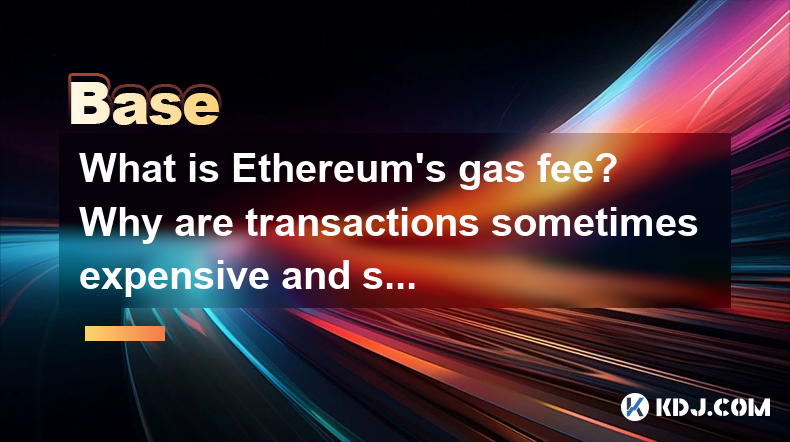
Ethereum's gas fee is a crucial concept for anyone interacting with the Ethereum blockchain. Gas fees are payments made by users to compensate for the computational energy required to process and validate transactions or execute smart contracts on the Ethereum network. These fees are essential for the operation of the network, as they incentivize miners to include transactions in blocks and maintain the blockchain's integrity.
What is Gas and How is it Calculated?
Gas is the unit of measure for the computational effort required to perform operations on the Ethereum network. Each operation, such as sending Ether (ETH) or executing a smart contract function, has a specific gas cost associated with it. The total gas fee for a transaction is calculated by multiplying the amount of gas used by the gas price, which is measured in Gwei (1 Gwei = 0.000000001 ETH).
For example, if a transaction requires 20,000 units of gas and the gas price is set at 20 Gwei, the total gas fee would be:
[ 20,000 \text{ gas} \times 20 \text{ Gwei/gas} = 400,000 \text{ Gwei} = 0.0004 \text{ ETH} ]
Why Do Gas Fees Fluctuate?
The cost of transactions on the Ethereum network can vary significantly due to several factors. Network congestion is one of the primary reasons for fluctuating gas fees. When the network is busy, with many users trying to execute transactions simultaneously, the demand for block space increases. Miners prioritize transactions with higher gas prices, leading to an increase in fees as users compete to have their transactions processed quickly.
Another factor influencing gas fees is transaction complexity. Simple transactions, like sending ETH from one address to another, typically require less gas than complex operations, such as interacting with decentralized applications (dApps) or executing smart contracts. The more complex the operation, the more gas it consumes, and thus, the higher the fee.
How to Check Current Gas Prices
To check the current gas prices on the Ethereum network, users can utilize various tools and platforms. Etherscan is a popular blockchain explorer that provides real-time data on gas prices. Users can visit the Etherscan website and navigate to the "Gas Tracker" section to view the current average, low, and high gas prices.
Additionally, many Ethereum wallets, such as MetaMask, display gas price estimates and allow users to adjust the gas price for their transactions. To check gas prices in MetaMask:
- Open the MetaMask extension in your browser.
- Click on the "Send" or "Interact with Contract" button.
- In the transaction details, you will see an option to adjust the gas price. MetaMask will show you the estimated gas fee based on the current network conditions.
Strategies to Minimize Gas Fees
There are several strategies that users can employ to minimize their gas fees on the Ethereum network. Timing transactions during periods of low network activity can significantly reduce costs. Typically, gas prices are lower during off-peak hours, such as late at night or early in the morning.
Another strategy is to use gas price prediction tools. Platforms like EthGasStation provide forecasts of future gas prices, allowing users to plan their transactions accordingly. By setting a lower gas price and waiting for the transaction to be processed, users can save on fees, though this may result in longer confirmation times.
Batching transactions is another effective method to reduce gas costs. Instead of sending multiple individual transactions, users can combine them into a single transaction, thereby reducing the total gas required. This approach is particularly useful for users who need to perform multiple operations on the network.
The Role of Gas Limit
The gas limit is another important aspect of Ethereum transactions. It represents the maximum amount of gas a user is willing to spend on a transaction. If the gas limit is set too low, the transaction may fail to execute, and the user will still lose the gas spent up to that point. Conversely, setting the gas limit too high can result in unnecessary expenses.
To set an appropriate gas limit, users should consider the complexity of the transaction. For simple ETH transfers, a gas limit of 21,000 is typically sufficient. For more complex operations, such as interacting with smart contracts, users may need to increase the gas limit based on the specific requirements of the contract.
Gas Fees and Ethereum's Scalability
The issue of high gas fees is closely linked to Ethereum's scalability challenges. As the network grows and more users interact with it, the demand for block space increases, leading to higher fees. Layer 2 scaling solutions, such as Optimistic Rollups and zk-Rollups, aim to address this issue by processing transactions off the main Ethereum chain and then settling them on the blockchain in batches, thereby reducing the load on the network and lowering gas fees.
Frequently Asked Questions
Q: Can gas fees be refunded if a transaction fails?
A: No, gas fees are not refundable. If a transaction fails due to insufficient gas or other reasons, the gas spent up to the point of failure is consumed by the network and cannot be recovered.
Q: How can I estimate the gas required for a smart contract interaction?
A: To estimate the gas required for a smart contract interaction, you can use tools like Remix or Truffle, which allow you to simulate transactions and view the gas costs before executing them on the live network.
Q: Are there any alternatives to Ethereum that offer lower transaction fees?
A: Yes, several blockchain networks offer lower transaction fees compared to Ethereum. Examples include Binance Smart Chain, Polygon (formerly Matic), and Solana. These networks provide alternatives for users looking to reduce their costs while still interacting with decentralized applications.
Q: How does Ethereum's upcoming upgrade to Ethereum 2.0 affect gas fees?
A: Ethereum 2.0 aims to transition the network from a proof-of-work to a proof-of-stake consensus mechanism, which is expected to improve scalability and reduce gas fees. However, the exact impact on gas fees will depend on various factors, including the adoption rate of the new system and the overall network usage.
Disclaimer:info@kdj.com
The information provided is not trading advice. kdj.com does not assume any responsibility for any investments made based on the information provided in this article. Cryptocurrencies are highly volatile and it is highly recommended that you invest with caution after thorough research!
If you believe that the content used on this website infringes your copyright, please contact us immediately (info@kdj.com) and we will delete it promptly.
- Wyoming Is Launching a Stablecoin Later This Year, Which Could Be the First Issued by a Public Entity in the U.S.
- 2025-04-08 14:20:12
- BNB vs SOL: Which Crypto to Invest in?
- 2025-04-08 14:20:12
- Big News for XRP as Ripple CEO Meets with Trump and Sparks Intrigue Within the Cryptocurrency Community Hinting at Promising Developments.
- 2025-04-08 14:15:12
- Interactive Brokers Expands Cryptocurrency Portfolio by Adding Four Major Altcoins
- 2025-04-08 14:15:12
- US stocks fall on Wednesday, dragged down by a sharp sell-off in tech stocks, as renewed trade war concerns rattle investors
- 2025-04-08 14:10:12
- Just 24 Hours After Adding Its Name to the Roster of Companies Pursuing a Bitcoin (BTC) Treasury Strategy, GameStop (GME) — Led by Its CEO Ryan Cohen — Is Also Adding Its Name to Those Firms Issuing Convertible Debt to Raise Funds for BTC Acquisition
- 2025-04-08 14:10:12
Related knowledge
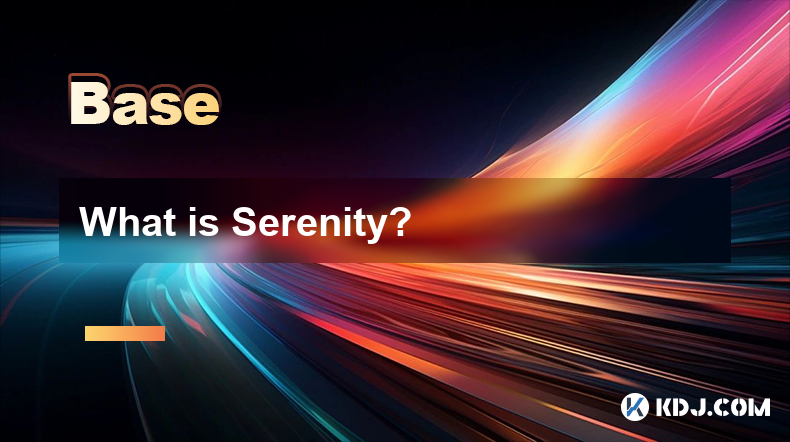
What is Serenity?
Apr 08,2025 at 02:00pm
Serenity, also known as Ethereum 2.0, represents a major upgrade to the Ethereum blockchain. This ambitious project aims to address the scalability, security, and sustainability issues faced by the current Ethereum network. Serenity is not a single update but a series of upgrades that will transform Ethereum into a more efficient and robust platform. Th...

What is Finality Gadget?
Apr 08,2025 at 04:14am
The Finality Gadget is a crucial component in the architecture of certain blockchain networks, particularly those that utilize a hybrid consensus mechanism. It plays a pivotal role in ensuring the finality of transactions, which means that once a transaction is confirmed, it cannot be altered or reversed. This article delves into the intricacies of the ...
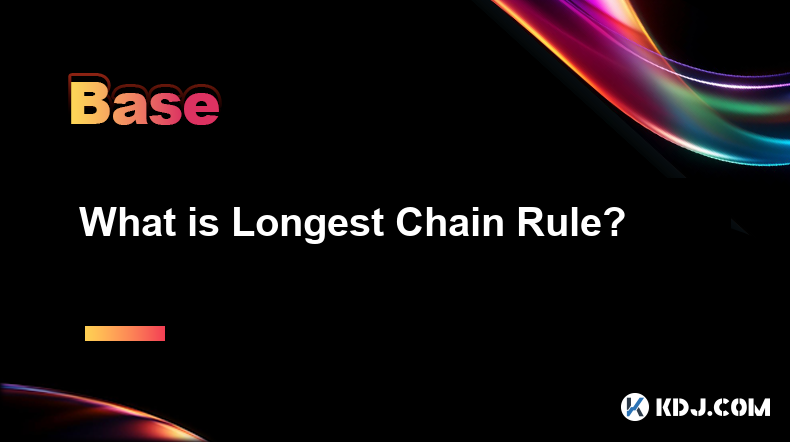
What is Longest Chain Rule?
Apr 08,2025 at 07:50am
The Longest Chain Rule is a fundamental concept in blockchain technology, particularly in the context of cryptocurrencies like Bitcoin. This rule is crucial for maintaining the integrity and security of the blockchain network. In essence, the Longest Chain Rule dictates that the valid blockchain is the one with the most cumulative proof-of-work, which i...

What is Orphan Block?
Apr 08,2025 at 05:00am
What is an Orphan Block?In the world of cryptocurrencies, particularly in blockchain technology, the term orphan block is frequently encountered. An orphan block is a block that has been mined and added to the blockchain but is later discarded or replaced by another block. This phenomenon occurs due to the decentralized nature of blockchain networks, wh...
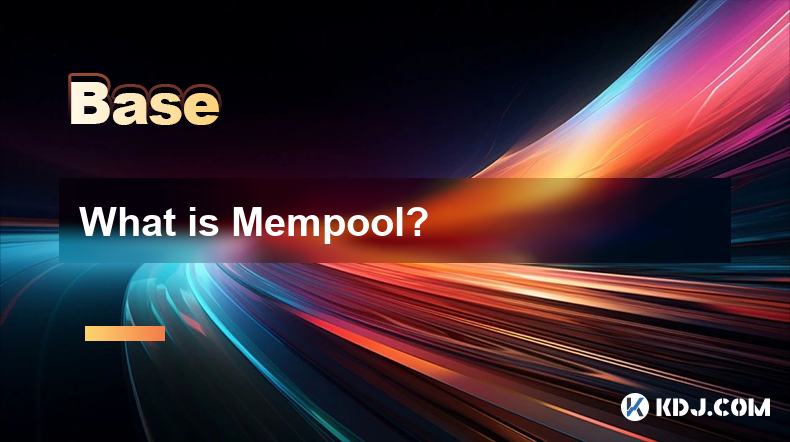
What is Mempool?
Apr 08,2025 at 12:36pm
What is Mempool?In the world of cryptocurrencies, particularly Bitcoin, the term Mempool is frequently mentioned. But what exactly is a Mempool, and why is it important? A Mempool, short for memory pool, is a critical component of the blockchain network that serves as a temporary storage area for unconfirmed transactions. When a user initiates a transac...
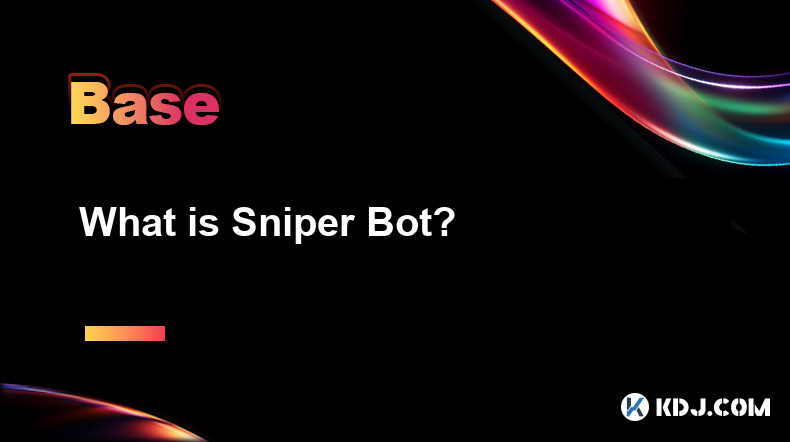
What is Sniper Bot?
Apr 07,2025 at 10:43pm
A Sniper Bot is a type of automated trading software used within the cryptocurrency market to execute trades at optimal times, often milliseconds before other traders. These bots are designed to take advantage of new token listings, price fluctuations, and other market opportunities to buy or sell assets quickly and efficiently. The primary goal of a Sn...

What is Serenity?
Apr 08,2025 at 02:00pm
Serenity, also known as Ethereum 2.0, represents a major upgrade to the Ethereum blockchain. This ambitious project aims to address the scalability, security, and sustainability issues faced by the current Ethereum network. Serenity is not a single update but a series of upgrades that will transform Ethereum into a more efficient and robust platform. Th...

What is Finality Gadget?
Apr 08,2025 at 04:14am
The Finality Gadget is a crucial component in the architecture of certain blockchain networks, particularly those that utilize a hybrid consensus mechanism. It plays a pivotal role in ensuring the finality of transactions, which means that once a transaction is confirmed, it cannot be altered or reversed. This article delves into the intricacies of the ...

What is Longest Chain Rule?
Apr 08,2025 at 07:50am
The Longest Chain Rule is a fundamental concept in blockchain technology, particularly in the context of cryptocurrencies like Bitcoin. This rule is crucial for maintaining the integrity and security of the blockchain network. In essence, the Longest Chain Rule dictates that the valid blockchain is the one with the most cumulative proof-of-work, which i...

What is Orphan Block?
Apr 08,2025 at 05:00am
What is an Orphan Block?In the world of cryptocurrencies, particularly in blockchain technology, the term orphan block is frequently encountered. An orphan block is a block that has been mined and added to the blockchain but is later discarded or replaced by another block. This phenomenon occurs due to the decentralized nature of blockchain networks, wh...

What is Mempool?
Apr 08,2025 at 12:36pm
What is Mempool?In the world of cryptocurrencies, particularly Bitcoin, the term Mempool is frequently mentioned. But what exactly is a Mempool, and why is it important? A Mempool, short for memory pool, is a critical component of the blockchain network that serves as a temporary storage area for unconfirmed transactions. When a user initiates a transac...

What is Sniper Bot?
Apr 07,2025 at 10:43pm
A Sniper Bot is a type of automated trading software used within the cryptocurrency market to execute trades at optimal times, often milliseconds before other traders. These bots are designed to take advantage of new token listings, price fluctuations, and other market opportunities to buy or sell assets quickly and efficiently. The primary goal of a Sn...
See all articles






















































































